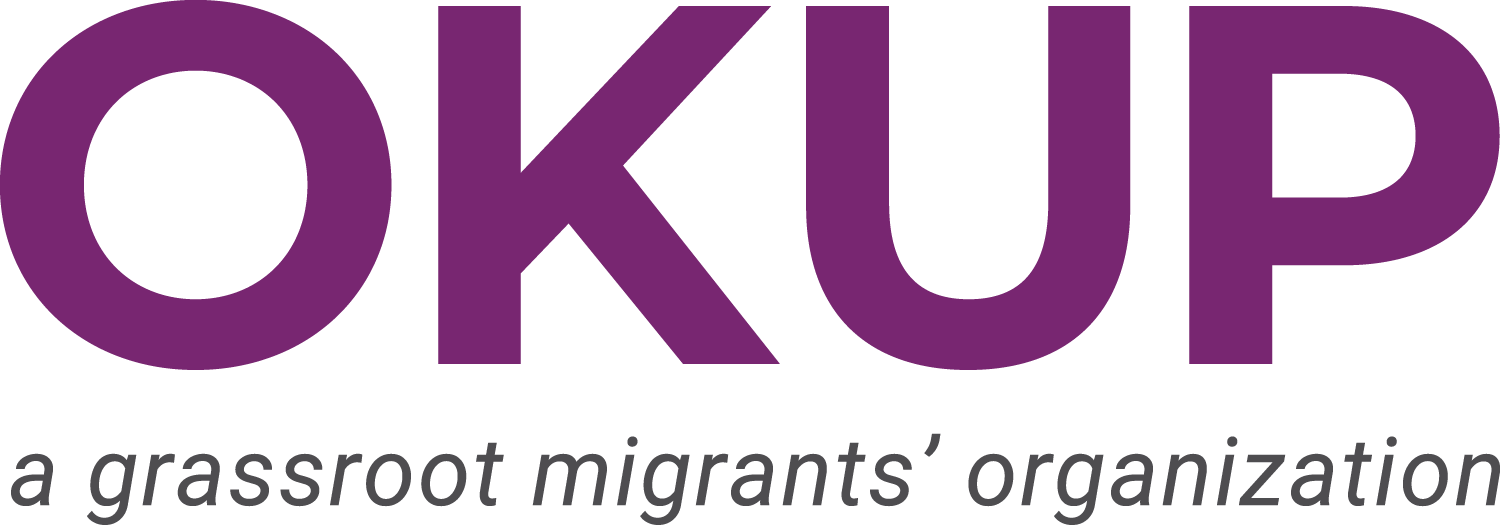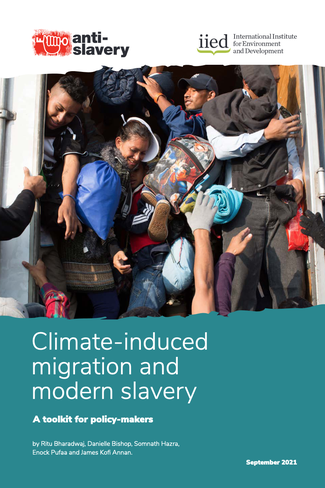Climate-induced Migration and Modern Slavery: a Toolkit for Policymakers (Ghana)
2021
- Author
- Bharadwaj R, Bishop D, Hazra S, Pufaa E and Annan J K (IIED)
- World region
- Sub-Saharan Africa
- Origin of migration
- North-Ghana
- Area of transit
- Central Belt: Kumasi, Techiman, Sunyan
- Destination of migration
- Central Belt: Kumasi, Techiman, Sunyan. South: Accra, Takoradi, Cape Coast, Koforidua
- Who is affected
- Girls, Men, Young women
- Type of climatic event
-
Rapid-onset event, Slow-onset event
Northern Ghana is an ecologically fragile area. The effects of climate change damage farmland and property, to the detriment of people's livelihood opportunities and farmers' ability to grow crops. Extractive business activities also contribute to environmental degradation. Climate change and environmental degradation lead to food insecurity and unemployment.
- Type of migration/mobility
-
Internal, Rural to urban, Seasonal
Typically, younger people migrate during the long dry season and return home for the farming season, while older family members stay back. Migrants travel to the south if they cannot find work in the central belt. Girls and young women often migrate to escape harmful traditional practices in their communities, e.g. female genital mutilation and early/forced marriage.
- Destination industry or sector
-
Agriculture, Kayayie, Mining
- Type of modern slavery
-
Debt bondage, Forced labour, Forced marriage, Human trafficking
*Human trafficking for forced labour
Men, young women and girls are pushed to migrate to find alternative sources of income for themselves and their families. The situations that push them to migrate can also make them vulnerable to exploitation when they migrate. Human traffickers and unscrupolous employers take advantage of this vulnerability. There is emerging evidence that the severe and systematic exploitation of young women working as head porters (kayayie) in Ghanaian cities is becoming prevalent.
- Link between climate change, migration and modern slavery
- Direct
- Key vulnerability factors
-
Families are forced into increasingly precarious situations by crop failure, the difficulty of farming the land, and damage to property and land. Because they lack alternative livelihoods, young people from these families are compelled to migrate to find work in the centre or south of Ghana. Young women also migrate to escape traditional practices, such as forced marriage, which families can increasingly use as a survival mechanism. This situation contributes to making them increasingly vulnerable to human trafficking, debt bondage and forced labour.
- Summary
-
This source, drawing on research on Ghana and the Sundarbans region, shows how the negative effects of climate change force people into unsafe migration and increase their vulnerability to forced marriage, debt-bondage, forced labour and human trafficking. It explains how women and children who stay back are also at risk of modern slavery. Families use harmful traditional practices (such as forced marriage) to cope with the negative effects of climate change. Girls and young women who try to escape can be driven to take unsafe migration routes, increasing their exposure to modern slavery. Access to resources and information is key to improving people's resilient and ability to adapt to climate change.
- Recommendations
-
Recommendations to policy makers and other stakeholders include:
- address modern slavery in development planning and Nationally Determined Contribution strategies as a matter of urgency;
- recognise the link between climate change and migration in policy debates and that the effects of climate change exacerbate modern slavery;
- and include affected communities in decision making to make sure solutions address actual needs.
More research is needed to understand the complex links between climate change, migration and modern slavery.



